Earlier this week, the Department of Defense released a report called “Progress Toward Security and Stability in Afghanistan – November 2010” (you can download the full report here). At 105 pages, there is quite a bit of information to digest.
I took the liberty and reproduced a couple of the graphs and a map from the security section. From reading the report, and looking at the data displayed, you’ll see that the security situation has worsened in Afghanistan over the past year, despite the surge of US forces. Keep in mind the following:
- The reporting date ends in September, so we are not aware of the DoD’s assessment of the current security situation.
- DoD doesn’t seem to have expected results from the surge this year; 2010 was the year to shape the battleground, while improved results are expected in 2011.
- The crux of the surge is directed at the south (Helmand and Kandahar). The east (Paktia, Paktika, and Khost area and Kunar/Nuristan area) is still in the “shaping” phase, while the north and west are “economy of force” actions, meaning there are not enough troops and resources to effect change in these areas.
- The security assessment has been done only for the 141 “key terrain districts.” The other 160-plus districts have not been assessed, and the Taliban have a reach in many of these districts. Those districts may not be key to us, but they are to the Taliban.
Are you a dedicated reader of FDD's Long War Journal? Has our research benefitted you or your team over the years? Support our independent reporting and analysis today by considering a one-time or monthly donation. Thanks for reading! You can make a tax-deductible donation here.

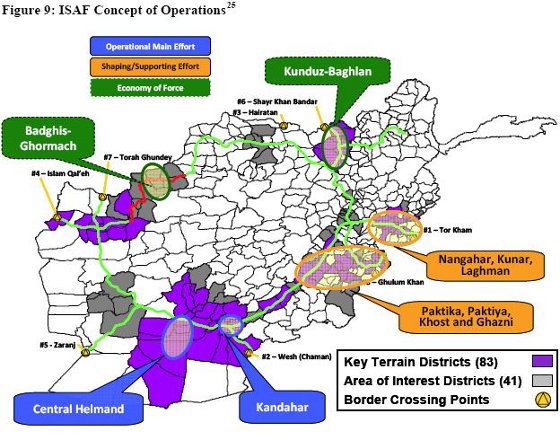
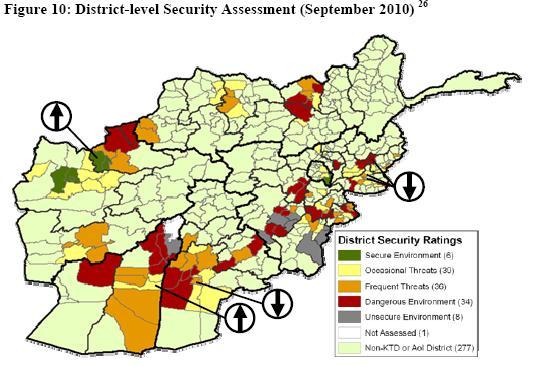
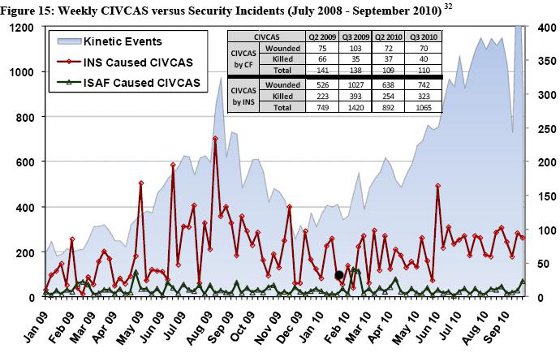
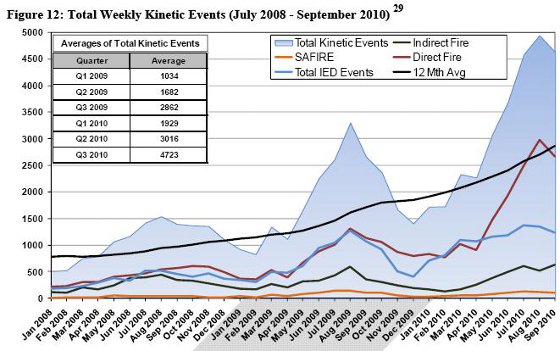
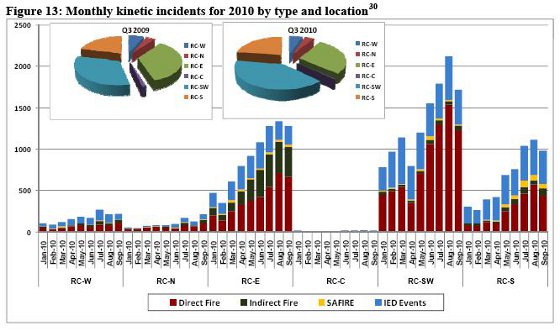
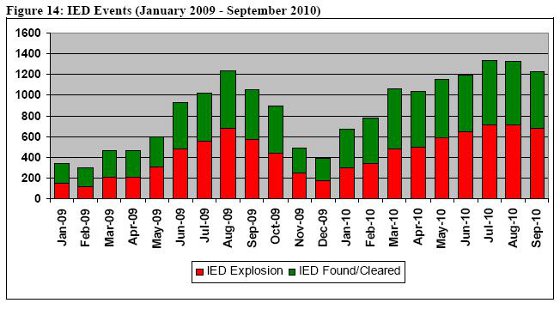







5 Comments
Thank you Bill for your sharp work.
The graphics seem to reflect a Taliban surge.
That’s what one should expect given the overall strategy that the ISAF is implementing. When one puts troops into enemy territory and attempts to clear it, one can generally expect an increase in violence.
I attribute the rise in “violence” to the increased engagements with the enemy we’ve enabled with the surge strategy.
There was an uptick in Coalition casualties attendant to the Iraq surge as well, but that was to be expected because we had the resources to engage the insurgency in havens like Anbar/Sadr City/Diyala and Mosul.
We are in places we weren’t in before the surge.
In winter the fighting typically slows down because the passes are snowed in, so the numbers should drop in the next couple of months. What is disturbing is that the levels were sustained far longer in 2010. Where is the money coming from?
Since we gave the Pakistanis billions in 2009/10 and aided their flood victims this year, perhaps it isn’t all that surprising that their resources were free to aid and abet the Taliban. Echoes of the old Marxist dictum that Capitalists will sell the rope by which they are to be hung.
> In winter the fighting typically slows down
> because the passes are snowed in, so the
> numbers should drop in the next couple of
> months.
We should redirect Pakistan’s aid dollars to fund a vast array of snow machines.